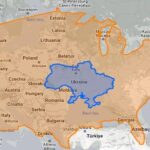The race to develop advanced, general-purpose humanoid robots is intensifying, with Tesla’s Optimus and Figure AI’s Figure 01 emerging as leading contenders. This article delves into the capabilities of Figure 01, backed by significant investment from industry giants like Jeff Bezos, Microsoft, and OpenAI, and compares its potential to Tesla’s Optimus. Which company will achieve large-scale production of AI-powered humanoid robots first?
Figure AI: A New Challenger in the Robotics Arena
Figure AI, a robotics startup founded by Brett Adcock, recently secured a staggering $675 million in funding, signaling a serious challenge to Tesla’s dominance in the field. This investment, fueled by prominent backers including Jeff Bezos, Microsoft, OpenAI, NVIDIA, Intel, and Cathie Wood’s Ark Invest, values Figure AI at $2.6 billion. Crucially, the deal includes a partnership with OpenAI to develop cutting-edge AI models specifically designed for humanoid robots. This collaboration aims to leverage OpenAI’s expertise in large language models to enhance Figure 01’s cognitive abilities and accelerate its development.
From Sci-Fi Dream to Reality: The Story of Figure AI
Brett Adcock, a lifelong robotics enthusiast and admirer of Isaac Asimov’s work, founded Figure AI in 2022. His previous successes with Vettery, an AI-powered talent marketplace, and Archer Aviation, an eVTOL company, provided the foundation and capital for this ambitious venture. Adcock assembled a team of top engineers from leading companies like Boston Dynamics, Tesla, Google DeepMind, and Apple, leveraging recent advancements in AI, computing power, and battery technology to accelerate development.
Figure 01: Capabilities and Potential
Figure 01 boasts impressive specifications:
- Height: 5 feet 6 inches
- Weight: 132 pounds (60 kg)
- Payload Capacity: 44 pounds (20 kg)
- Runtime: 5 hours
- Walking Speed: 2.7 miles per hour (1.2 meters per second)
The robot is fully electric and designed for general-purpose tasks. Demonstrations have showcased its ability to learn complex tasks through observation and repetition, powered by GPT-4 vision models. For example, Figure 01 learned to operate a Keurig coffee maker in just seven hours by observing human demonstrations. This rapid learning capability underscores the potential of combining advanced AI with robotics.
The Future of Humanoid Robots: A Vision of Abundance
Adcock envisions a future where billions of humanoid robots transform the labor market, addressing a $40 trillion global industry. He aims to produce and deploy one million Figure 01 units by 2030, a challenging but potentially transformative goal. This ambitious vision highlights the potential of humanoid robots to revolutionize various industries and reshape the future of work.
Figure AI vs. Tesla: The Competition Heats Up
Both Figure AI and Tesla are pushing the boundaries of humanoid robot technology. While Tesla’s Optimus leverages the company’s expertise in manufacturing and AI, Figure AI’s strategic partnership with OpenAI and its focus on general-purpose applications present a unique advantage. The collaboration with OpenAI could be a game-changer, enabling Figure 01 to understand and respond to complex instructions in natural language.
Conclusion: A Transformative Era for Robotics
The development of humanoid robots like Figure 01 and Tesla’s Optimus marks a significant leap in robotics and AI. As these technologies mature, they hold the potential to reshape industries, redefine labor, and usher in an era of unprecedented automation. The competition between Figure AI and Tesla will undoubtedly accelerate innovation in this rapidly evolving field. The coming years will be crucial in determining which company will lead the charge in bringing advanced, AI-powered humanoid robots to the mass market.
